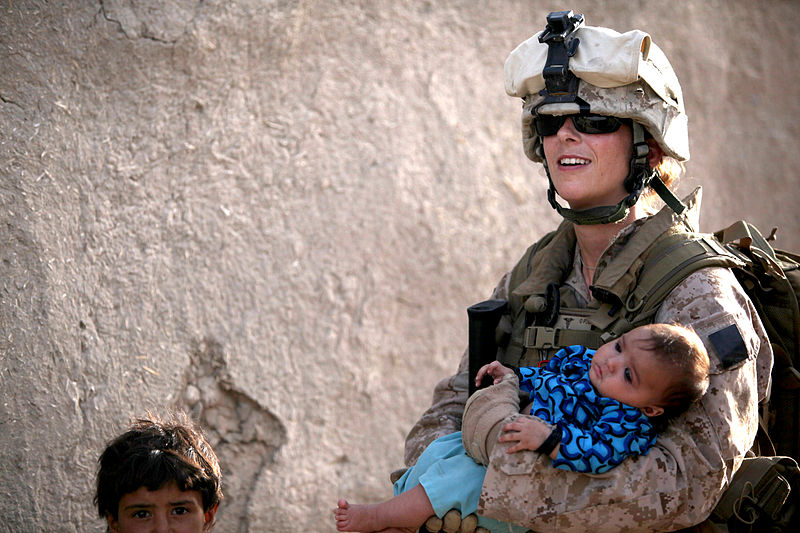In January 2013 the United States Department of Defense (DoD) lifted a ban on women serving in combat fields and assignments, marking the end of one of the few remaining barriers to the full inclusion of women in the U.S. military. Repealing the combat exclusion policy is one step toward eliminating the discrepancy between servicewomen’s official assignments and their actual scope of responsibilities, and it realigns policy with the realities of a modern warfare where “[t]he necessity of war has already propelled women to the front lines” (Baldor, 2012). As the United States’ largest employer – employing over 203,000 active-duty servicewomen in 2011 – the DoD’s exclusion of women from combat assignments, particularly in the Army, has had implications for their career progression and socioeconomic wellbeing.
– Career progression: Women constituted only 16 percent of all officers and 7.1 percent of generals and admirals in 2011 (CNN, 2013). This is largely due to the combat exclusion ban, which barred women “from entering the tactical career fields associated with promotion to flag/general officer grades and serving in career enhancing assignments” (Baldor, 2012). All military Services identify command assignments as important for officer advancement, and, in part due to their lack of tactical or operational experience, women are not highly represented in the candidate pools for command assignments (MLDC Decision Paper #2, 2011).
– Economic power: Although the evidence relating poverty rates to military enlistment is mixed, women are more “responsive to increases in the ratio of military to civilian pay” (Schacherer, 2005). Women can be expected to be more likely to enlist in the military if their career progression prospects, and thus their expected pay, are greater.
– Social equality: Perceptual barriers for women in the military are proliferated by limitations in women’s career advancement, variability of mentoring and career counseling by race and gender, and the prevalence of sexual violence in the military (MLDC Decision Paper #4, 2011).
Once implemented, the change in policy will open more than 13,000 positions to women, primarily in the Army (U.S. Department of Defense, 2012). The repeal of combat exclusion and the Services’ recent publication of their implementation plans offer an opportunity for greater gender equality across the Services. By allowing women to be assigned to combat fields, the DoD also acknowledges the realities of women’s participation in the military and allows them to earn the professional recognition associated with that work. The repeal of the combat exclusion ban is one necessary step toward creating a truly inclusive work environment, empowering women, and creating the necessary accommodations to create a more efficient and effective military organization.
Sources
- Baldor, Lolita. “Women on the Front Lines: Pentagon Recommends Allowing Women to Serve at Battalion Level.” Huffington Post, February 8, 2012, www.huffingtonpost.com/2012/02/09/women-on-the-front-lines-war_n_1264748.html?view=print&comm_ref=false (accessed 1 Sep 2013).
- CNN. “By the numbers: Women in the U.S. military.” CNN, 24 January 2013, http://edition.cnn.com/2013/01/24/us/military-women-glance/index.html (accessed 1 Sep 2013).
- Military Leadership Diversity Commission. Decision Paper #2: Branching and Assignments. Arlington, VA: Military Leadership Diversity Commission, 2011.
- Military Leadership Diversity Commission. Decision Paper #4: Promotion. Arlington, VA: Military Leadership Diversity Commission, 2011.
- Schacherer, Rachel Ann. “The Conditions Affecting Military Enlistments.” The Public Purposes III, (2005): http://www.american.edu/spa/publicpurpose/upload/The-Conditions-Affecting-Military-Enlistments.pdf (accessed 1 Sep 2013).
- U.S. Department of Defense. DOD Opens More Jobs, Assignments to Military Women. 9 February 2012.
This post is by Jennifer Barry Jomier, class of 2014 MPA candidate. Read Jennifer’s full essay in the Journal of International Affairs of Columbia University’s School of International Affairs: http://jia.sipa.columbia.edu/few-good-women-gender-inclusion-united-states-military
